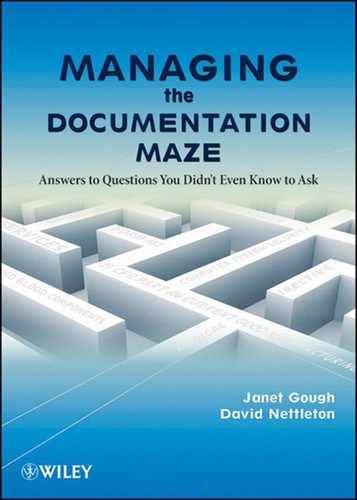Book Description
The accessible, easy-to-follow guide that demystifies documentation management
When it comes to receiving documentation to confirm good science, U.S. and international regulators place high demands on the healthcare industry. As a result, companies developing and manufacturing therapeutic products must implement a strategy that allows them to properly manage their records and documents, since they must comply with rigorous standards and be available for regulatory review or inspection at a moment's notice.
Written in a user-friendly Q&A style for quick reference, Managing the Documentation Maze provides answers to 750 questions the authors encounter frequently in their roles as consultants and trainers. In simple terms, this handy guide breaks down the key components that facilitate successful document management, and shows why it needs to be a core discipline in the industry with information on:
Compliance with regulations in pharmaceutical, biological, and device record keeping
Electronic systems, hybrid systems, and the entire scope of documentation that companies must manage
How to write and edit documents that meet regulatory compliance
Making the transition to an electronic system, including how to validate and document the process
Anyone responsible for managing documents in the health field will find this book to be a trusted partner in unraveling the bureaucratic web of confusion, while it initiates a plan on how to put an effective, lasting system in place—one that will stand up to any type of scrutiny.
Table of Contents
- Cover Page
- Title Page
- Copyright
- CONTENTS
- INTRODUCTION
- ABOUT THE AUTHORS
- CHAPTER 1: UNDERSTANDING THE REGULATIONS
- CHAPTER 2: PEOPLE, PROCESS, AND DOCUMENTATION
- CHAPTER 3: PRINCIPLES OF DOCUMENT MANAGEMENT
- CHAPTER 4: DECIDING TO GO ELECTRONIC AND FINDING A VENDOR
- CHAPTER 5: MAKING THE TRANSITION FROM HYBRID TO VALIDATED E-SYSTEM
- CHAPTER 6: PART 11 COMPLIANCE
- CHAPTER 7: STANDARD OPERATING PROCEDURES
- CHAPTER 8: NONCLINICAL RECORDS
- CHAPTER 9: CLINICAL AND SUBMISSION RECORDS
- CHAPTER 10: CONSISTENCY AND READABILITY IN DOCUMENTS
- CHAPTER 11: MAINTAINING THE SYSTEM
- CHAPTER 12: MAINTAINING INSPECTION READINESS
- CHAPTER 13: RESOURCES
- APPENDIX
- FEDERAL REGISTER
- GUIDANCE FOR INDUSTRY
- Index
